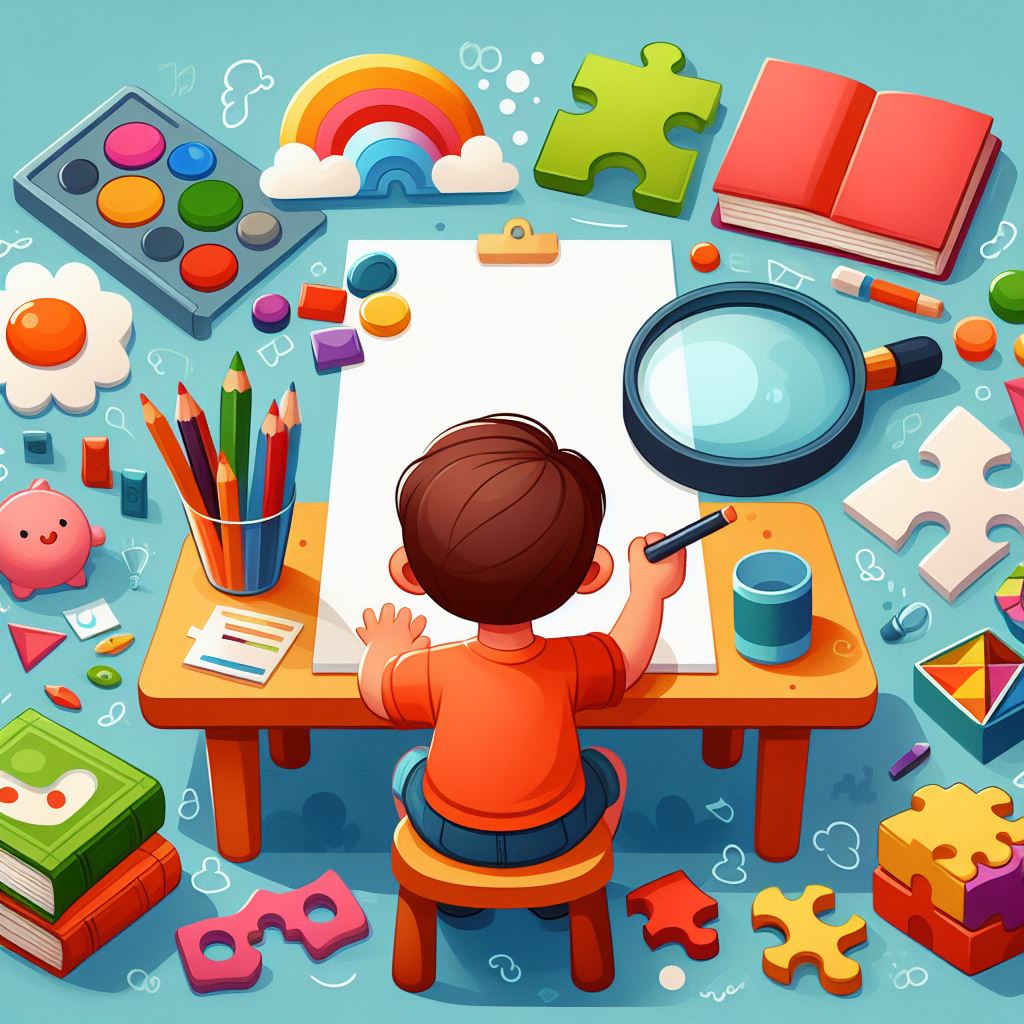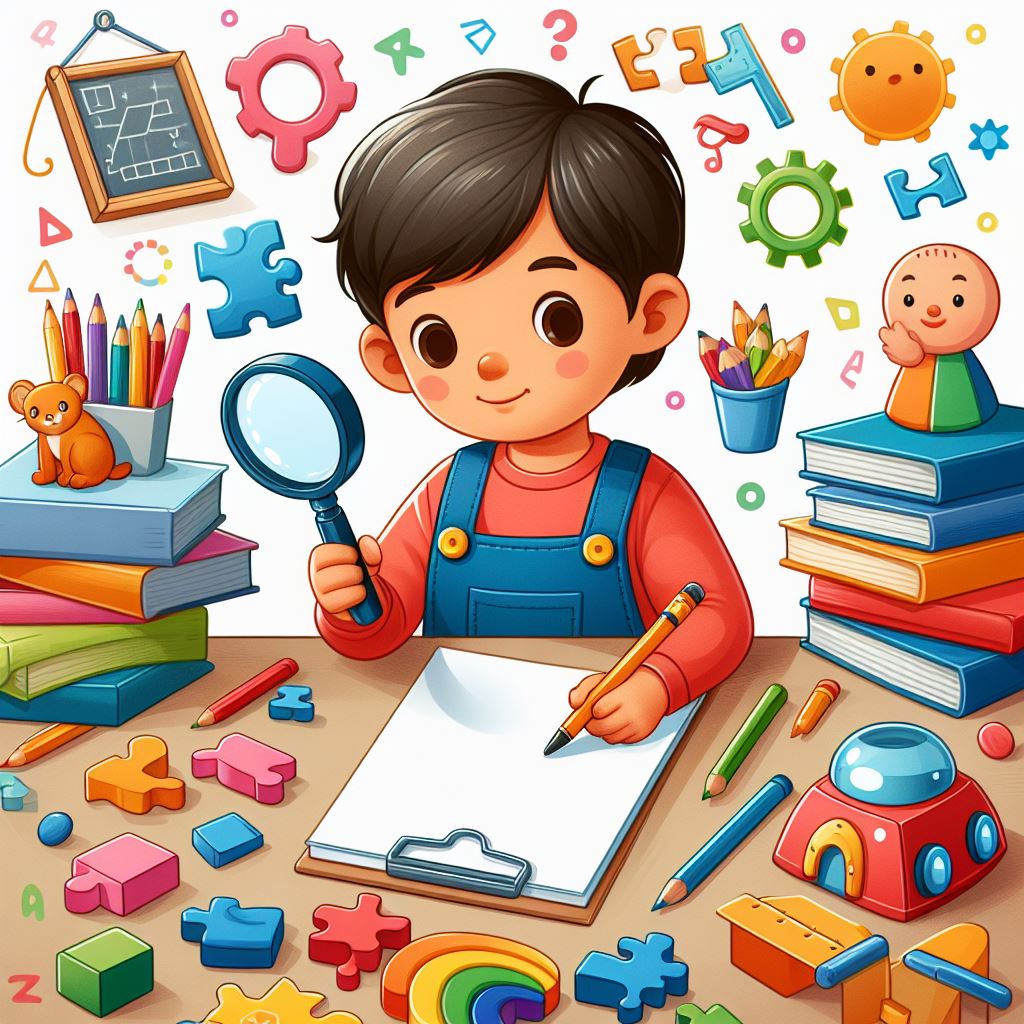Your basket is currently empty!

Cognitive development for 1 year old
What is Cognitive development for 1 year old?
Cognitive development in a one-year-old is marked by significant growth in various areas of mental and intellectual abilities. Here are key aspects of cognitive development for a one-year-old:
- Object Permanence:
- Understanding that objects continue to exist even when they are out of sight. For example, if you hide a toy, the child begins to look for it.
- Cause and Effect:
- Exploring and understanding simple cause-and-effect relationships. This could include actions like dropping a toy to see it fall.
- Imitation:
- Beginning to imitate the actions and behaviors of adults or older siblings. This may include gestures, facial expressions, or simple activities.
- Exploration and Curiosity:
- Engaging in exploratory behavior, such as touching, feeling, and mouthing objects to learn about their textures and shapes.
- Gross Motor Skills:
- Developing basic gross motor skills, such as sitting, crawling, and standing with support. Some children may take their first steps around their first birthday.
- Fine Motor Skills:
- Improving fine motor skills, like the ability to pick up small objects using the thumb and forefinger (pincer grasp).
- Language Development:
- Expanding receptive language skills, understanding simple commands and recognizing familiar words and names.
- Communication Skills:
- Attempting to communicate through gestures, babbling, and possibly saying a few words like “mama” or “dada.”
- Social Awareness:
- Developing an awareness of social interactions and showing preferences for familiar caregivers or family members.
- Problem-Solving:
- Beginning to solve simple problems, such as figuring out how to reach a desired toy or exploring different ways to play with an object.
- Memory:
- Developing short-term memory, remembering familiar faces, objects, or routines.
- Play:
- Engaging in parallel play, where the child plays alongside others but may not actively interact with them.
- Recognition of Familiar Faces and Voices:
- Demonstrating recognition of familiar people, distinguishing between familiar and unfamiliar faces and voices.
- Emotional Expression:
- Expressing basic emotions such as joy, frustration, and curiosity.

Variations in Cognitive development
It’s important to note that each child develops at their own pace, and there can be variations in the timing of achieving these milestones. Providing a stimulating and safe environment, encouraging exploration, and engaging in positive interactions are essential for fostering healthy cognitive development in one-year-olds.
As you watch your toddler at play, have you noticed how hard she concentrates on everything she does? Each game or task is a learning proposition, and she’ll gather all sorts of information about the way things work. She’ll also now be able to draw on facts she’s already learned in order to make decisions and find solutions to play-related challenges. However, she’ll be interested in solving only those problems that are appropriate for her developmental and learning level, so hand her a toy that fascinated her at eleven months and she may walk away bored. Or suggest a game that’s too advanced and she’ll object. She’ll be especially attracted to mechanical devices, such as remote, switches, buttons, and knobs. It may be difficult for you to judge exactly what she can and can’t handle at this age, but it’s not hard for her to decide. Provide her with a range of activities, and she’ll select the ones that are challenging but not completely beyond her abilities.
Imitation is a big part of her learning process at this age. Instead of simply manipulating household objects, as she did during her first year, she’ll actually use a brush on her hair, babble into the phone, turn the steering wheel of her toy car, and push it back and forth. At first, she’ll be the only one involved in these activities, but gradually she’ll include other players. She might brush her doll’s hair, “read” to you from her book, offer a playmate a pretend drink, or hold her toy phone to your ear. Because imitation is such an important part of her behavior and learning, now, perhaps more than ever, you need to be aware of the behaviors that you are modeling for her. Remember, things that you say or do might be replayed (either to your great pleasure or dismay!) over and over again as she plays and learns. Older siblings are crucial here. This copying behavior happens between toddlers and their older siblings. It is an ideal time to take advantage of these natural developmental cues.
Well in advance of her second birthday, your toddler will demonstrate a knack for hiding games, showcasing an impressive memory for the whereabouts of concealed objects long after they’ve disappeared from her view. While you might casually pocket her ball or cracker during play, she will not easily forget!

Leave a Reply